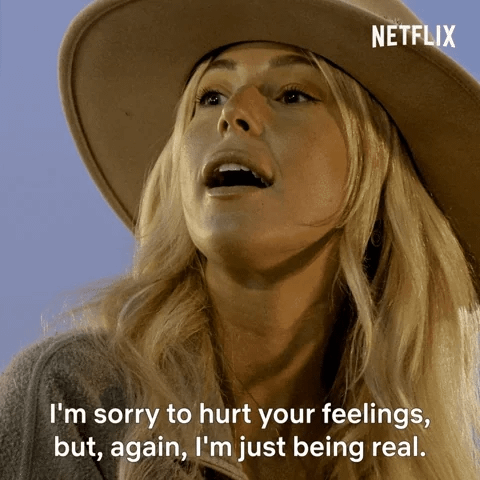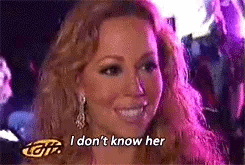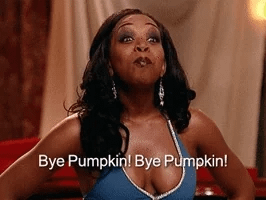Non-State Actress #26: The Panama Canal Is the Geopolitical Equivalent of Netflix
Rocking the Boat Is Messier Than a Trip as a 90-Day Fiancé
Welcome to Non-State Actress written by me, Maggie Feldman-Piltch . Our last issue, We Need to Talk About an Annoying Man From North Korea, is here.
You can find some other stuff on critical minerals here.
Also, I was on a podcast this week talking about information warfare.
If you like what you read, consider being a paid subscriber. Beginning May 2025, paid subscribers will get national security explainers from yours truly delivered right to your phone, plus some other cool stuff. It’s pretty great.
BLUF
The Panama Canal is the geopolitical equivalent of Netflix. When it first came online, it fundamentally altered how stuff moved from Point A to Point B – just like how Netflix completely changed how we watch TV and movies. The Canal's history is more tumultuous than Netflix's battles with studios, and the mere suggestion of the US reclaiming ownership over this independently managed resource is more dramatic than finding out you've been dumped via a Netflix account lockout or anything on 90 Day Fiancé. And I mean that.
Press Play
A Brief History of a Complicated Relationship
Trying to summarize the Panama Canal's history is like condensing the entire 90-Day Fiancé franchise into a few paragraphs – impossible without leaving someone as unsatisfied as Anfisa was with Jorge before his 300-pound weed arrest.
After Panama gained independence from Colombia in 1903 (with U.S. naval support), the U.S. immediately secured rights to build and operate a canal faster than Manuel could explain his priority was marrying an American to provide for his children back home. It was so fast that self-interest couldn't be denied. This historical context matters.
The project's scars run deep. About 70% of workers came from the Caribbean, followed by workers from Latin America. Construction was dangerous – mosquito-borne diseases like yellow fever and malaria were the biggest killers. Approximately 27,609 people died during construction.
For perspective: 40% of Barbados' working-aged men went to Panama between 1900-1910, cutting the island's population from 200,000 to 172,000. Compare that to the 25% of U.S. men who fought in World War I.
So picture this semi-slow motion tragedy in a newly independent nation with limited infrastructure and desperate financial needs. The influx of workers created some economic activity but also fueled Panamanian frustration. It's like helping your friend move and unpack, then not getting invited to the housewarming – but way worse. Not exactly the foundation for a healthy relationship.
The Canal itself? An engineering marvel that cost the U.S. over $375 million in 1914 dollars! For most of the 20th century, the U.S. controlled the Canal Zone – a 10-mile-wide strip of land along the canal – as American territory, dividing Panama in half and breeding resentment.
Tensions peaked in the 1960s, leading to the 1977 Torrijos-Carter Treaties, which gradually transferred canal control to Panama by December 31, 1999. The agreement was controversial everywhere – Americans saw it as surrendering a strategic asset, while Panamanians thought the 20-year timeline too long. Like any good settlement, no one was happy.
Today, the Panama Canal Authority (ACP), an autonomous Panamanian government agency, operates the canal – though the U.S. maintains significant influence through economic ties and the fact that American traffic dominates canal usage.
Why Bother
When looking back on failed relationships, it's hard to see the positives... unless it was a strategic move to facilitate an international relocation.
That's exactly what the Panama Canal was – making it 'worth' all the tragedy, the $375 million price tag, and the 10-year commitment.
The Canal absolutely WRECKED existing trade patterns and transformed the global flow of goods. It's the trade equivalent of binge-watching all 15 Queer Eye episodes at once after a lifetime of weekly TV. Your sense of time gets totally whacked, and when The Great British Bake-Off releases just ONE EPISODE PER WEEK, your irritation level exceeds Jorge's on all that weed.
The Canal's opening slashed average travel times from the Atlantic to the Pacific by 5 months per route and let ships avoid the notoriously dangerous Drake Passage and Strait of Magellan.
I Don't Know Her
Fast forward to 2025 and we’ve gone from Mariah Carey/JLo to Mariah Carey/Eminem when it comes to the Canal. Why? I’m so glad you asked!
The Panama Canal has been making headlines for a couple key reasons:
Climate Change has entered the chat. Severe drought has critically lowered water levels in Gatun Lake, forcing the Panama Canal Authority to reduce daily transits and implement draft restrictions.[^4] Canal traffic is more backed up than the fiancé visa process. Ships carry less cargo to meet weight limits, significantly reducing capacity. Some ships now go around South America or through the equally troubled Suez Canal, making everything take longer and cost more. And people hate that.
On January 20th, 2025, President Trump's inaugural address included these bombshells about the Canal:
"[The Canal had] foolishly been given to the country of Panama by the US."
"We have been treated very badly from this foolish gift that should have never been made, and Panama's promise to us has been broken."
"Above all, China is operating the Panama Canal. And we didn't give it to China. We gave it to Panama, and we're taking it back."
"American ships are being severely overcharged and not treated fairly... and that includes the United States Navy…"
Inaugural addresses set the tone for a presidency – like the airport meeting scene in 90-Day Fiancé. You've met online (or campaigned), but this is when it gets REAL. This level of emphasis can't be overstated.
A week later, Trump doubled down to reporters: "China is running the Panama Canal that was not given to China, that was given to Panama foolishly, but they violated the agreement, and we're going to take it back, or something very powerful is going to happen."
Emotional Damage. Emotional Damage
The chaos from these comments falls somewhere between Paramount pulling all its content from Netflix and Paul running into the rainforest while Katherine gets robbed by a machete-wielding man on 90 Day. Mixed metaphor? Sorry, not sorry.
Why is this a big deal? First, the historical context of US-Panama relations makes calling a major treaty a "mistake" and threatening to eliminate it incredibly destabilizing for a crucial geopolitical relationship.
Second, Trump's three claims – that China operates the Canal, that the treaty was broken, and that American ships are overcharged – are all demonstrably false.
The Panama Canal is owned and operated by the Panama Canal Authority (ACP), not China. Two ports were managed by Hong Kong-based CK Hutchison Holdings but were sold to BlackRock in March 2025. China has many cargo ships using the Canal and has built infrastructure in Panama through its Belt-and-Road initiative, but it doesn't run the Canal.
There's zero evidence the Carter-Torrijos Treaty has been violated.
And the treaty requires fees to be "just, reasonable, equitable, and consistent with international law." After weeks of researching port systems, tolls, and fees (more than I ever wanted to know), I can flatly say there's no evidence US ships are treated differently than other nations' vessels. I've checked every internet corner, contacted shipping companies, and posted on message boards. Nothing suggests otherwise.
You Don't Know What You've Got Until It's Gone
One might argue there's some strategic genius behind threatening to nullify an international treaty and claim another country's territory. Like going to Russia bride-shopping on television, it's not my personal choice, but hey, this is America – think what you want.
Panama, like most nations, has been growing economically closer to China. The Chinese Communist Party prioritized Panama's participation in its Belt and Road Initiative, investing billions in infrastructure projects throughout the country.
But rocking this particular boat is like posting a passive-aggressive Instagram story about your partner while sitting next to them at dinner. It won't improve the relationship – it'll push them away. Threatening to "take back" the Canal could accelerate Panama's pivot toward China. Countries, like 90 Day Fiancés being monitored by their future in-laws, don't respond well to ultimatums.
Surprisingly though, we've seen a significant shift in China-Panama relations following Trump's comments. On February 3, 2025, after meeting with Secretary of State Marco Rubio, Panama's President José Raúl Mulino announced Panama would leave China's Belt and Road Initiative – becoming the first Western Hemisphere country to withdraw from the program. Mulino stated Panama would seek U.S. investments and infrastructure projects instead of continuing the 2017 BRI agreement.
This shift might seem like a win for aggressive U.S. posturing, but there's more. The BlackRock acquisition of CK Hutchison's Panama Canal ports has hit a major roadblock. China has announced it will review the transaction, and CK Hutchison has delayed finalizing the sale. Chinese officials have called it "coercion," making this strategically important deal increasingly uncertain.
Ultimately, this rhetoric solves nothing. U.S. credibility suffers every time false information is used to force action. History shows this approach consistently backfires, as in these examples:
The Iraq War and WMDs: The 2003 invasion was justified by claims of weapons of mass destruction that were never found, creating a global trust deficit that still hampers U.S. Middle East diplomacy.
The Xinjiang cotton ban: U.S. import bans based on limited evidence of forced labor led to Chinese counter-sanctions and strengthened alternative economic ties, failing to improve human rights while damaging U.S.-China relations.
In each case, questionable information used to justify unilateral action created worse problems than it solved. The Panama Canal situation follows the same pattern – using false claims for short-term wins that create long-term distrust.
If there's a genuine need to recalibrate U.S.-Panama relations, there are better approaches that don't involve falsehoods. Like: "The deepening relationship between Panama and the Chinese Communist Party raises serious U.S. national security concerns. We need rigorous, well-intentioned conversations with our Panamanian friends about our mutual commitments and keeping global supply chains resilient."
Wrap It Up
The Panama Canal isn't just infrastructure – it's a relationship status between global powers. Just as Netflix transformed entertainment from weekly episodes to on-demand binges, the Canal revolutionized global trade by slashing transit times from months to hours. We barely notice this transformation until something threatens to disrupt it.
"Taking back" the Panama Canal based on false claims isn't just diplomatically awkward – it's sending a "u up?" text to your ex who's clearly moved on. Panama has sovereignty over the Canal, China doesn't run it, and there's no evidence the treaty's been violated. These false claims risk pushing Panama toward China – creating exactly what they claim to prevent.
While Panama is distancing itself from China's Belt and Road Initiative, complications with the BlackRock port deal show that aggressive, fact-free posturing creates as many problems as it solves. Using false information for geopolitical leverage doesn't build partnerships – it creates fragile arrangements built on resentment.
For American millennial women, this matters. When global shipping gets disrupted, it's not just ships on a map – it's higher prices at Sephora, delayed Amazon deliveries, and potential job insecurity in import-dependent industries.
The U.S.-Panama relationship deserves thoughtful communication and mutual respect – not ultimatums based on not-even-fan fiction. Just as we've become dependent on streaming services for on-demand content, our economy relies on routes like the Panama Canal for efficient goods delivery.
And like any streaming service, you only truly appreciate it when it's gone.
Gimme More
I wasn’t kidding when I said I went down this rabbit hole for a long, long time. I am so sorry.
Books & Academic Works:
1. "The Canal Builders: Making America's Empire at the Panama Canal" by Julie Greene - Available as an ebook on major platforms. Greene provides an excellent social history focusing on labor politics and the lives of the diverse workforce.
2. "Emperors in the Jungle: The Hidden History of the U.S. in Panama" by John Lindsay-Poland - While not by a woman, it's edited by Julie Greene and provides important context on U.S. militarism in Panama.
3. "Silver Men: West Indian Labour Migration to Panama, 1850-1914" by Velma Newton - Available digitally through some university libraries. Essential for understanding the often-overlooked Caribbean contribution.
4. "Panama's Canal: What Happened When the United States Gave a Small Country What It Wanted" by Elizabeth Parker - Examines the handover of the canal and its aftermath.
Online Academic Resources:
1. "Panamanian Women and Their Participation in the Isthmus' Politics" by Yolanda Marco Serra - Available through JSTOR and focuses on women's roles in Panama's political development.
2. "U.S.-Panama Relations: Charting a New Course?" by Rebecca Bill Chavez - Report for the Inter-American Dialogue, available online.
3. "The Panama Canal Watershed: Science for Sustainable Use" by Consuelo De Fatima Montenegro - Research on environmental sustainability issues facing the canal.
Free Online Resources:
1. Global Americans Research Papers - Their website features work by several women scholars on Panama-China relations and regional geopolitics: globalamericans.org
2. Panama Canal Museum Collection at University of Florida - Digitized archive with photographs, documents, and oral histories: ufdc.ufl.edu/pcm
3. Smithsonian Digital Collection on the Panama Canal - Extensive digital archive with photographs and materials: si.edu/spotlight/panama-canal
4. MIT Visualizing Cultures: "The Panama Canal" by Ellen Sebring - Multimedia visual history project: visualizingcultures.mit.edu
5. Council on Foreign Relations - Reports and analyses by Shannon K. O'Neil and other scholars on Latin American affairs: cfr.org
Documentaries & Media Available Online:
1. "Panama Canal Stories" - Film directed by Carolina Borrero (and others) available on some streaming platforms, presenting five stories spanning 100 years of canal history.
2. PBS American Experience: "Building the Panama Canal" - Available to stream on PBS website with historian interviews including Julie Greene.
3. Khan Academy's "Panama Canal Lecture" by historian Emily Sohmer Tai - Free educational content online.
4. Vox Borders: "Why the US and China are Fighting Over This Tiny Country" - Short documentary available on YouTube that examines current geopolitical tensions.
Current News & Analysis:
1. Americas Quarterly - Features work by several women journalists and scholars covering Panama's politics and the canal: americasquarterly.org
2. Foreign Policy Research Institute - Articles by Vanessa Neumann and others on Panama's strategic importance: fpri.org
Panama Canal Authority Research Publications - Official reports and data, often featuring women researchers: pancanal.com/eng/op/research-publications










